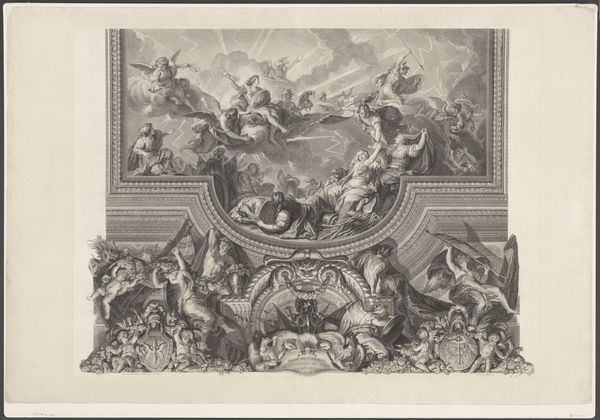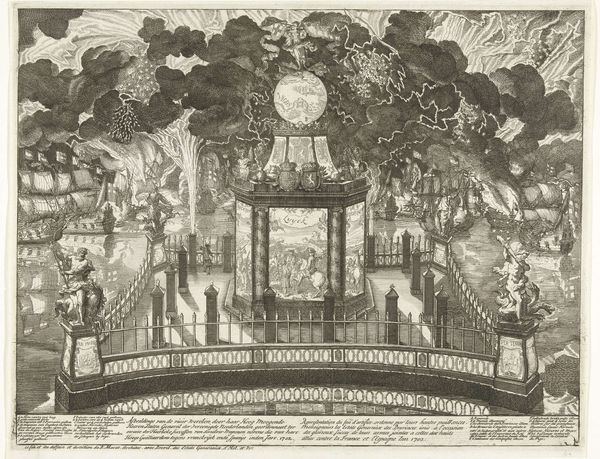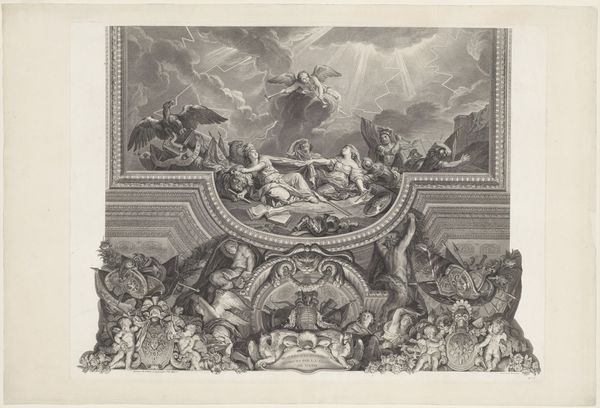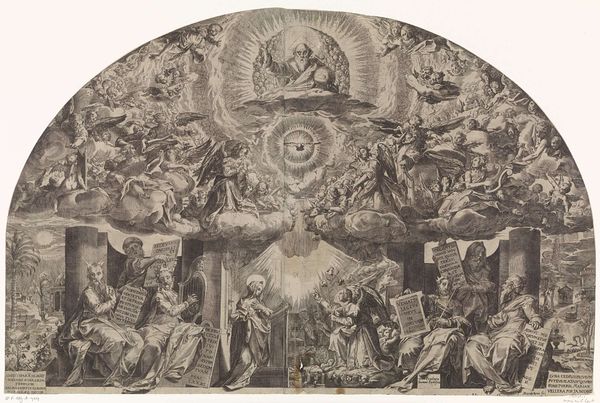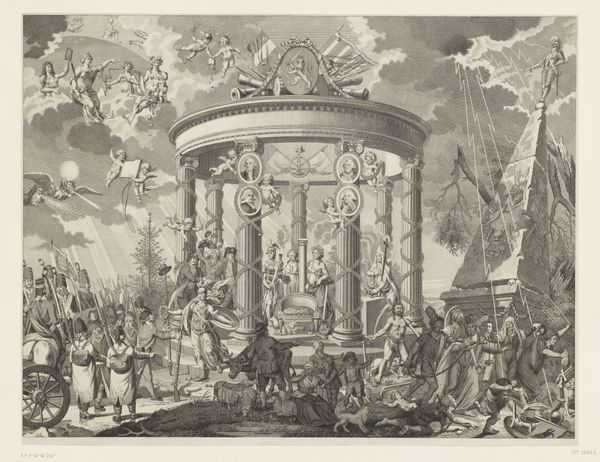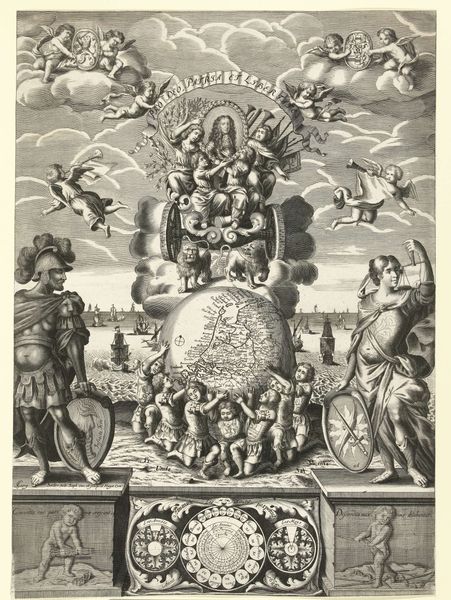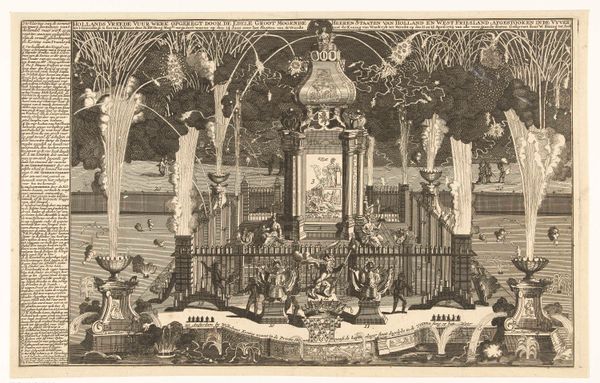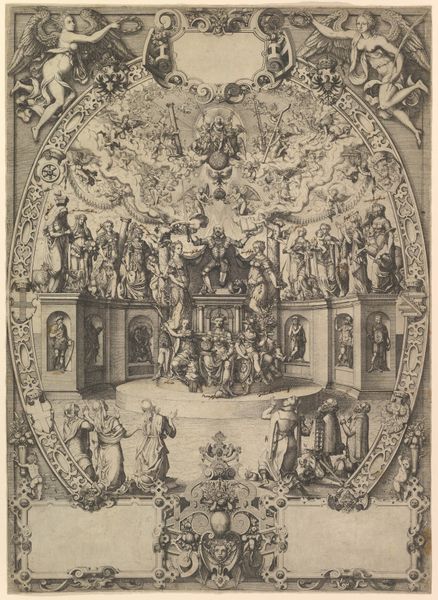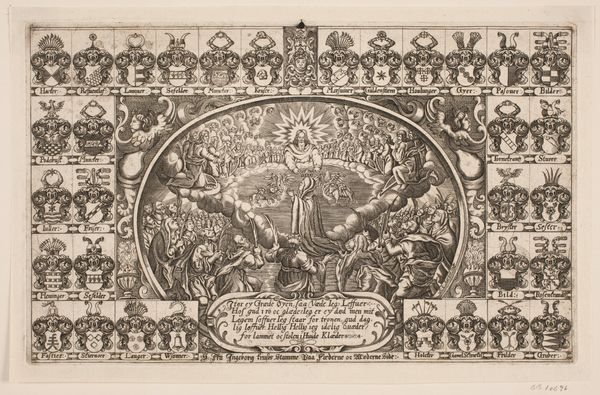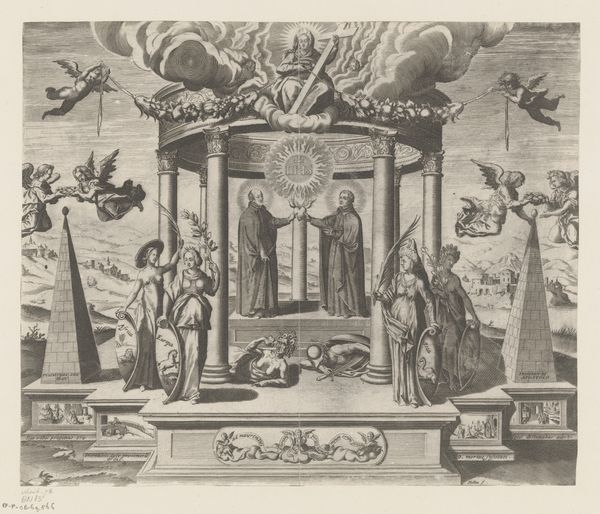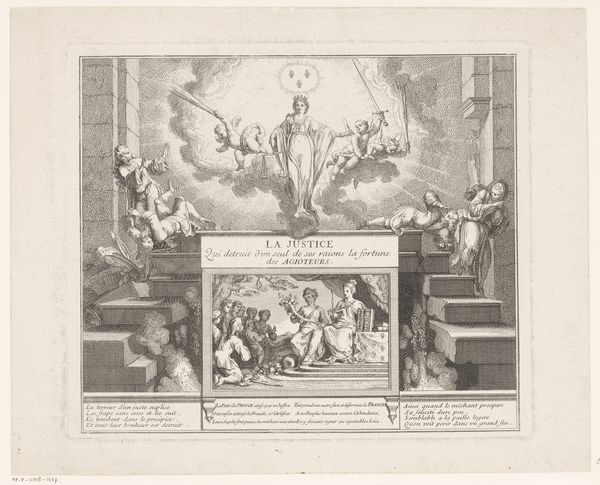
Plate for The Fish and the Fireworks, Fable Sixteen, in Fables Nouvelles, Dediées au Roy 1719
0:00
0:00
drawing, print, engraving
#
drawing
#
allegory
#
baroque
# print
#
book
#
france
#
history-painting
#
engraving
Dimensions: Book: 10 1/16 × 8 1/8 × 1 7/16 in. (25.5 × 20.6 × 3.7 cm) Plate: 3 3/16 × 4 in. (8.1 × 10.2 cm)
Copyright: Public Domain
Curator: This engraving, dating back to 1719, is titled "Plate for The Fish and the Fireworks, Fable Sixteen, in Fables Nouvelles, Dediées au Roy," by Lamotte-Houdar. It currently resides here at the Metropolitan Museum of Art. What is your immediate impression? Editor: An explosive display of symbols and light. There's almost a sense of divine revelation mixed with worldly spectacle. It's busy, but in a way that draws the eye deeper and deeper. Curator: Interesting you use the word 'explosive', given fireworks play a central part in its content, both literally and metaphorically. We're looking at a print, and in terms of process, that means considering the layers of decisions that the printmaker took in mark making. Notice the meticulous work in engraving and hatching, a real labour of love and the basis of visual culture. Editor: Yes, and the fireworks, presented as geometric shapes and bursts of light, almost read like constellations or mystical signs. Their imagery evokes a deeper understanding beyond mere entertainment. Curator: And these ‘signs,’ as you called them, might relate directly to the fable it illustrates. Although on the surface simply an illustration, the history and production is interesting because books themselves are of course material things, commodities in a way. It prompts considerations about artistic intent in what otherwise looks simply celebratory. Editor: Precisely. The placement of the figures gazing at the spectacle suggests the spectacle itself has instructional value; the carefully rendered reactions become an invitation to introspection. Their presence invites a symbolic reading of our world. It serves more than to merely provide visual stimulation for the wealthy consumer. Curator: Indeed. And when considering print production at this point in time we have to reflect on accessibility and readership – where would it be sold, to whom, and under which circumstances? A seemingly celebratory artwork in fact is more a part of production and material circulation within 18th century French society. Editor: Which shifts how one views it. The initial joyful explosion evolves into thoughtful interpretation—cultural messages carried on ink and paper. Curator: Exactly. Through a critical eye into the material, and in your case an appreciation of image's complex symbolic potential, we together provide insight, beyond just observation. Editor: Precisely. What initially felt like transient entertainment morphs into an encoded story reflecting societal beliefs—revealing symbolic resonance through the means of visual artistry and craft.
Comments
No comments
Be the first to comment and join the conversation on the ultimate creative platform.
